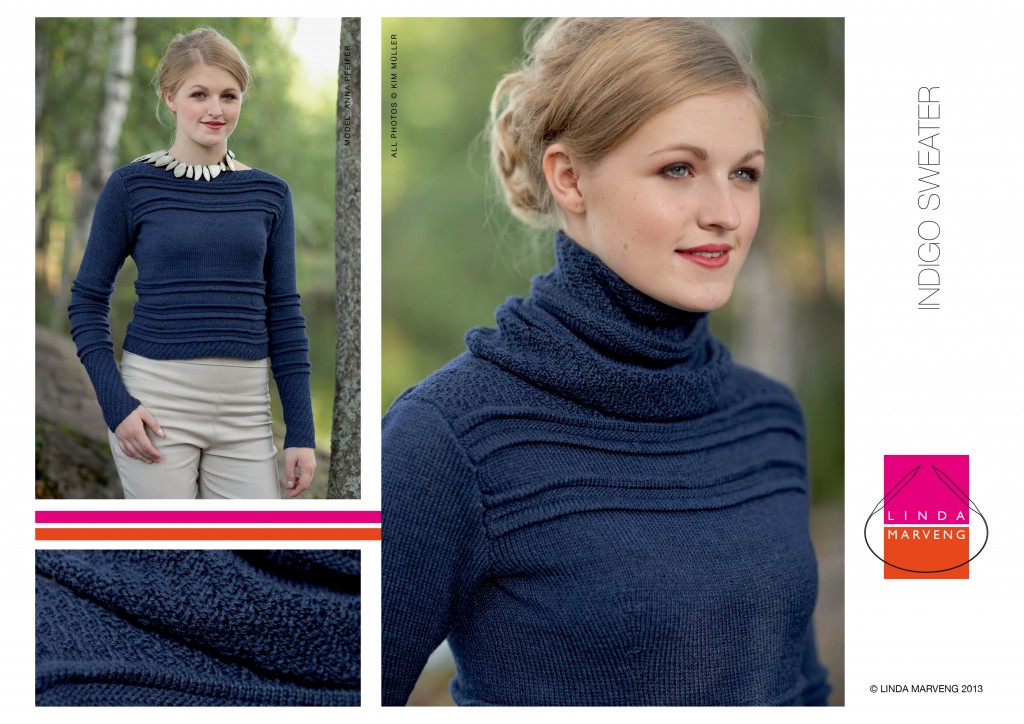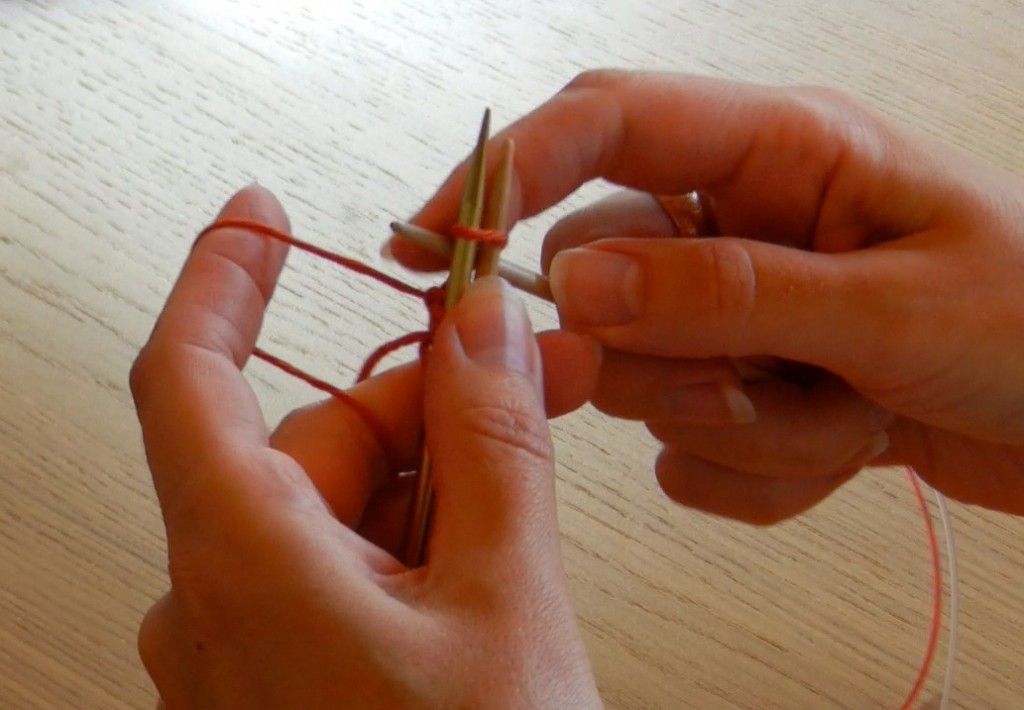 After completing a weekend workshop in Finishing and Fairisle I held for Vestre Aker Husflidslag/Handicraft association in Oslo, I am preparing the next which is Lace knitting for Larvik Husflidslag. So my mind is set on knitting techniques at the moment, spurred on by questions e-mailed to me for assistance on my patterns. The most popular video which is all over the Norwegian knitting groups on Facebook is one called Tilbakestrikkingens Kunst/The Art of Backwards knitting. It used to be the colloquial term for unraveling a row or a round; stitch by stitch, but this is literally knitting backwards without turning your knitting and purling, hence creating stocking stitch by knitting into the back loop in the opposite direction. For all of you knitters out there who dislike purling, do watch this:
After completing a weekend workshop in Finishing and Fairisle I held for Vestre Aker Husflidslag/Handicraft association in Oslo, I am preparing the next which is Lace knitting for Larvik Husflidslag. So my mind is set on knitting techniques at the moment, spurred on by questions e-mailed to me for assistance on my patterns. The most popular video which is all over the Norwegian knitting groups on Facebook is one called Tilbakestrikkingens Kunst/The Art of Backwards knitting. It used to be the colloquial term for unraveling a row or a round; stitch by stitch, but this is literally knitting backwards without turning your knitting and purling, hence creating stocking stitch by knitting into the back loop in the opposite direction. For all of you knitters out there who dislike purling, do watch this:
I adore tucks and hems. They are both enjoyable to knit and give such a distinct look to a garment. Above is the Indigo Sweater with tucks (pattern available in English on ravelry and in Norwegian in my book) modeled by the beautiful Anna Pfeifer, photographed by Kim Müller. Using two needles held parallel to each other, also raises some eyebrows, but it is ever so useful not to have to pick up stitches several rows down on the wrong side of work when you make a tuck or a hem. You only cast on, or knit one row with 2 needles held next to each other, and then on the next row or round pull out the extra needle so the stitches stay on the cord hence it becomes a stitch holder, while you continue to work with the other needle until you are ready to close the tuck or the hem. Then you fold the second needle – the holder – at the back and work knit 2 together with one stitch from each needle. This is a video I have made, but even if you do not understand my Norwegian I think you will find the demonstration useful.
 An I-cord, and especially an attached i-cord, is a method I favour for edgings when a bit of extra volume is needed at the end. Like at the top front edge of my Aran Bolero, and at the hem of my Aran Skirt, just to mention two garments where I have used it. The name in Norwegian is knitted cord, but that removes the fun of the name. I for Idiot, in several senses of the word: so easy that even an idiot can do it, that is when you know how, obviously! Other knitters have been quick to add: So boring that only an idiot would actually do it… Yes, I agree it is not what I enjoy knitting the most, but then it does make a neat rounded cord finish. And even an idiot have to admit to it…
An I-cord, and especially an attached i-cord, is a method I favour for edgings when a bit of extra volume is needed at the end. Like at the top front edge of my Aran Bolero, and at the hem of my Aran Skirt, just to mention two garments where I have used it. The name in Norwegian is knitted cord, but that removes the fun of the name. I for Idiot, in several senses of the word: so easy that even an idiot can do it, that is when you know how, obviously! Other knitters have been quick to add: So boring that only an idiot would actually do it… Yes, I agree it is not what I enjoy knitting the most, but then it does make a neat rounded cord finish. And even an idiot have to admit to it…

Your Indigo Sweater is one of my favorite designs, and the video was so absorbing I didn’t even notice that you weren’t speaking a language I understand. Great work, Linda!
P.S. For anyone else who doesn’t speak Norwegian, the demonstration of the technique starts at around 7 minutes, 45 seconds.
Thank you so much, for reviewing my video and pointing out exactly where the tuck demo starts! I am also grateful that you confirmed my belief that the language spoken here is not essential! Mind you, we stopped several times when my husband filmed my 5 demo videos (links to the other 4 are here: https://www.lindamarveng.com/2012/09/professional-finishing-course-online/) because I automatically began speaking in English instead of Norwegian. It was time to reset my brain!
I love how-to videos. I do so much better when I can see and hear how to accomplish a technique. Thank you for sharing!
I could not agree more! They are so much more useful than trying to understand from a picture or drawing in a book! Also a lot easier to refer to than trying to explain in words, when I get asked technique questions! So I am ever so pleased to share!
Pingback: Nip and tuck |
Pingback: slow knitz |
Pingback: Strikketreff/Knitting Gathering | Linda Marveng
Pingback: New Design: Lattice Back Jacket | Linda Marveng
Pingback: Three Examples of Excellent Narrative Pattern Writing | The Sweaty Knitter, Weaver and Devotee of Other Fiber Arts
Pingback: Juul Cardigan Again | Linda Marveng